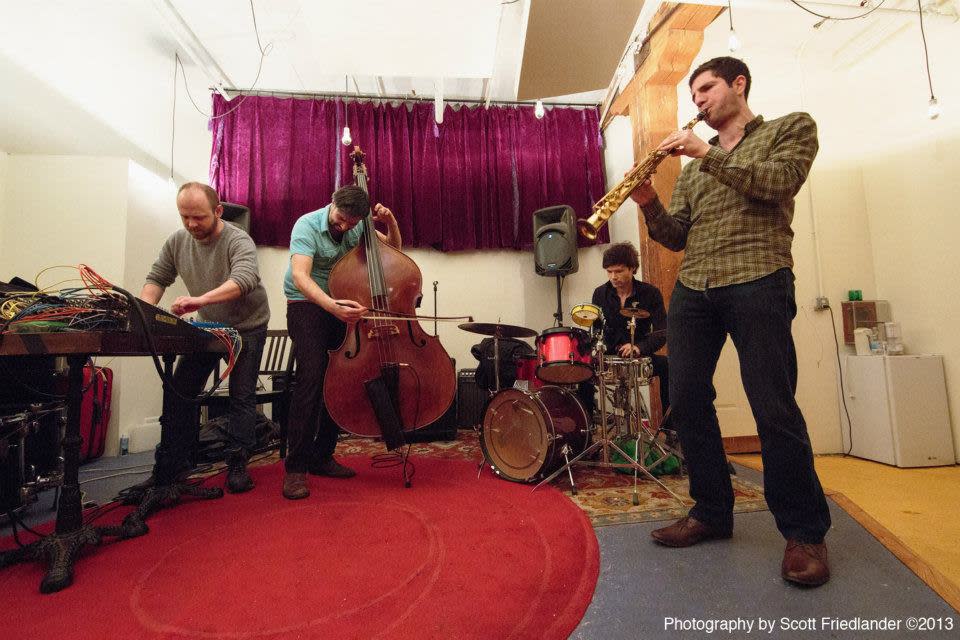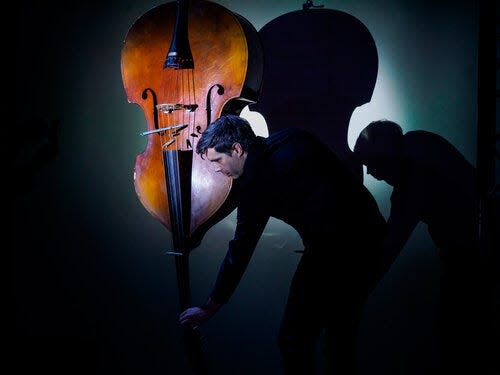Monroe native Ilgenfritz an international musician
- Oops!Something went wrong.Please try again later.
MONROE — Recently, I wrote about the origins of the moniker “Floral City," describing Monroe to the world. I said its origins were influenced and certainly leveraged by growers and landscapers I.E. Ilgenfritz, who founded his nursery operations in Monroe in 1847 and J.C.W. Greening, who started his company in 1850.

A descendant of I.E. Ilgenfritz, James Ilgenfritz, has made a name for himself and for Monroe in international experimental, jazz, contemporary classical and microtonal musical genres. According to a biography by Michael G. Nastos, Ilgenfritz was born in Monroe on Nov. 16, 1978. Early influences by non-musical artists, including beat poets William Burroughs and Allen Ginsberg; writers Herman Hesse, Franz Kafka and Thich Nhat Hanh; visual artists Egon Schiele, Andrew Wyeth, Marcel Duchamp; and filmmakers David Lynch, John Waters, Stanley Kubrick led to summer studies as a teen at the Interlochen Center for the Arts from 1992-1996. He also began playing the bass and studied under Toledo’s Norm Damschroder.

Ilgenfritz graduated from St. Mary Catholic Central High School in 1997 and, following a short stint at Eastern Michigan University, he earned a Bachelor of Arts degree in jazz and contemporary improvisation from the University of Michigan in 2002, where he studied with Steve Rush, Marion Hayden, Diana Gannett and Stuart Sankey. While still living in Michigan he played with several musical ensembles, including Bill Brovold's “Larval."
Ilgenfritz then moved to Brooklyn, N.Y. and worked with many of the area’s young artists. Ilgenfritz then moved to San Diego in 2005, and he enrolled in the master's performance program at the University of California/San Diego, working and studying with bassist Mark Dresser as well as cellist Charles Curtis, and Max/MSP creator Miller Puckette.
Ilgenfritz returned to New York, settling again in Brooklyn and collaborating with Eyal Maoz and Tim Berne. There, Ilgenfritz has led or participated in a number of ensembles, including the Anagram Ensemble, Trio Caveat and Hypercolor.

Ilgenfritz has toured nationally and internationally as well as performing his own compositions. For example, his 2021 work for solo contrabase with electronics, “I Saw Love” was inspired by, in his words, "'I Saw Love' (2021) is a reflection on the iconic image of the Black Power salute at the 1968 Olympics in Mexico City… John Carlos said he expected to see fear in Peter Norman's eyes when he and Smith explained their intentions. On the contrary, he said, 'I saw love.'"
In 2010, James lived near Central Park and began touring internationally and became New York City’s first Suzuki Bass teacher, outfitting children as young as 5 years old with child-size upright basses. With the support of his wife, Sarah Krasnow, he also dealt with surgeries to remove two benign brain tumors in 2013 and 2017. Those experiences teaching children and overcoming health challenges enhanced his work when, in 2019, he returned to California for graduate school to pursue his Ph.D. in music, which he completed in 2023.

Recently, Ilgenfritz presented a lecture on what is known as the Autonomous Mechanical Instrument Array (AMIA) and its relationship to African-American conceptual art at the University of Colorado — Colorado Springs Campus. The AMIA is a set of 12 mechanical instruments that play themselves in reaction to human movement. Ilgenfritz composed “MRI Dark," which brings together his compositions and improvisations in Just Intonation scordatura with the AMIA.
Subscribe Now: For all the latest local developments, breaking news and high school sports content.
“MRI Dark” expands the concept of entrainment from its traditional association with humans' capacity for rhythmic alignment into one that considers social structures as distinct agents. “MRI Dark” turns traumatic medical struggles into musical sites for meditation on human patience and empathy.
— Tom Adamich is president of Visiting Librarian Service, a firm he has operated since 1993. He also is project archivist for the Greening Nursery Co. and Family Archives and the electric vehicle awareness coordinator at Monroe County Community College.
This article originally appeared on The Monroe News: Monroe native Ilgenfritz an international musician

